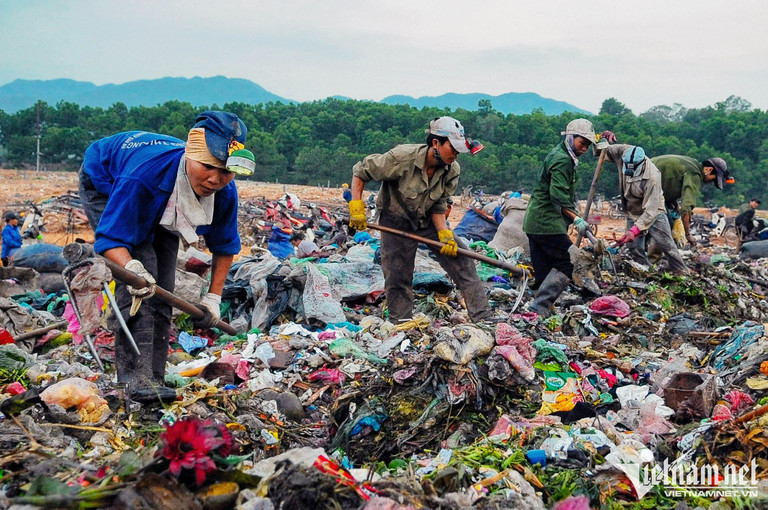
According to the Ministry of Science and Technology (MST), the technology of incinerating waste to generate electricity has been used widely in the world thanks to outstanding advantages over other technologies.
The waste-to-electricity technology reduces waste volume by 90-95 percent, uses up heat, reduces greenhouse gas emissions compared with dumping, and minimizes water pollution, bad odor and insects.
However, the total capacity of waste-to-electricity plants remains a controversial issue.
In a statement to the government asking for a plan to implement Plan 8, the Ministry of Industry and Trade (MOIT) suggested that the total capacity of the plants would be 493MW in the north, 122MW in the northern part of the central region, 60MW in the central part of the central region and 488MW in the south. The total capacity of waste-to-electricity plants throughout the country would be 1,212MW.
Provincial authorities, after considering MOIT’s plan, commented that the suggested capacity is too low compared with the actual demand and the provinces’ suggestions. Some provinces, including Hai Phong, Da Nang and Khanh Hoa, have sent documents to MOIT, asking to raise the total waste-to-electricity capacity.
Experts point out that waste-to-electricity is a special type of electricity generation compared with other types, such as hydropower, coal-fired thermal power, gas-fired thermopower, wind and solar power. These plants only operate when Electricity of Vietnam (EVN), the only wholesale buyer at this moment, pays for electricity. If EVN doesn’t need electricity from the plants, there won’t be no investment.
Meanwhile, things are different for waste-to-electricity. Burning waste to deal with environmental problems is the major task and electricity is generated during the process. This takes full advantage of electricity sources and helps reduce waste treatment costs.
Vietnam will have to build waste treatment factories, because landfills are not a good solution because they cause pollution. In many countries, waste-to-electricity is being applied instead of landfills.
In general, a waste-to-electricity project can have two sources of revenue. The first source is from local budgets that pay for waste treatment. The second one is the pay by EVN for electricity generated. Investors need to consider the two sources of revenue to define the break-even point and expected profits.
If EVN doesn’t buy electricity from this source, the state budget will have to spend more money to treat waste. Instead of the average fee of $21-25 per ton as currently applied, the fee may rise to $30-50 per ton. The heat to be generated during the waste incineration process, if not exploited, will be discarded. This will be a big waste of resources which is contrary to the policy on developing a circular economy.
Therefore, experts believe that it would be better not to set limitations on the total capacity of waste-to-electricity plants as suggested by MOIT.
The restrictions will make it impossible for provincial authorities to approve investment projects.
Khanh Hoa, for example, has 1.2 million people and the volume of waste by 2030 is expected to reach 1,300 tons a day. One ton of waste after burning can produce 500KWh of electricity. As such, the waste-to-electricity capacity of the province should be 27MW. However, the maximum capacity set for the province is 16MW only. This means that the remaining 11MW is wasted.
If investors want to build a 27MW plant, their environmental impact assessment report won’t be approved because the total capacity of waste-to-electricity plants in Khanh Hoa is 16MW only.
According to some experts, the theory that one ton of waste can generate 500kwh of electricity is just true for the present. International practice shows that the higher GDP is, the greater the calorific value of waste would be.
In China, for example, one ton of waste, when being burnt, can generate 700kwh. A waste-to-electricity plant has a life cycle of 30-50 years.
Experts estimate that the installation capacity of the power system is 80,000MW. If all provinces across the country build waste-to-electricity plants, the volume of electricity to be generated from burning waste would be 3,000MW, which is less than one percent of the total power sources.
Luong Bang